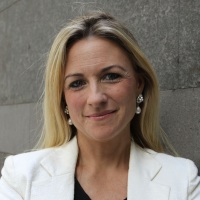If this happens, it will further increase the divide between the big banks and challenger lenders, which provide better value.
In Tuesday’s budget, Scott Morrison announced a six-basis-point levy on the liabilities of banks with assessed liabilities of $100 billion or more – that is, the big four and Macquarie.
This new tax will take effect on 1 July, with forecasts showing that it will raise $1.6 billion in FY18 and a similar amount in the next three years.
Australia’s five biggest banks are businesses, not charities, so it’s reasonable to assume they’ll pass at least some of this cost on to consumers. One obvious way to do that would be with more expensive home loans.
But Scott Morrison disagrees. In his budget speech, the Treasurer said this was “specifically not a levy on…home loans”. The budget documents also state that to help introduce the levy, the ACCC will hold a mortgage pricing inquiry. As part of the inquiry, the ACCC will be able to ask the five banks “to explain changes or proposed changes to residential mortgage pricing, including changes to fees, charges, or interest rates”.
Asking the big banks to explain their price rises is worth doing. Not only will this put a greater spotlight on pricing, it will hopefully make more Australians aware that there are lower-cost alternatives out there.
Of course, rate isn’t everything, but what people often don’t realise is that a lot of these products aren’t basic home loan offerings. Many are comprehensive products offering features such as offset accounts, extra repayments, redraw facilities and portability.
The government has justified this bank tax as a way to help repair the budget. Hopefully, it will also have the effect of getting borrowers to become more aware of the alternatives. While the mortgage market is competitive, with over 100 lenders in the field, Australian home owners are a curiously loyal bunch. Around 75 per cent of us have our loan with one of the big four banks. The question is, how wide does the gap have to grow before we start to jump ship?
Sally Tindall manages the RateCity editorial team, producing consumer-focused insights into personal finance and cost of living issues. Using RateCity’s unique data, Sally focuses on analysing the latest trends in relation to home loans, credit cards, savings and transactional products and superannuation.
Sally is passionate about helping everyday Australians get access to affordable finance options without falling victim to marketing ploys. She’s also passionate about helping people save money through smart budgeting and easing everyday expenses.
Sally is experienced in finance issues, having worked for the Institute of Chartered Accountants, the Prime Minister of Australia Julia Gillard, NSW Minister for Finance and Accenture Consulting in the United Kingdom.
At the federal government, Sally worked on three federal budgets targeted at easing the cost of living, providing greater access to affordable education and providing targeted financial assistance to in-need families. She also participated at multinational finance forums such as the G20 and APEC.
Sally is a regular contributor to news outlets including Fairfax, News Ltd, Money Magazine, Yahoo, Ninemsn, and a regular commentator on television and radio about personal finance matters.




Comments (0)